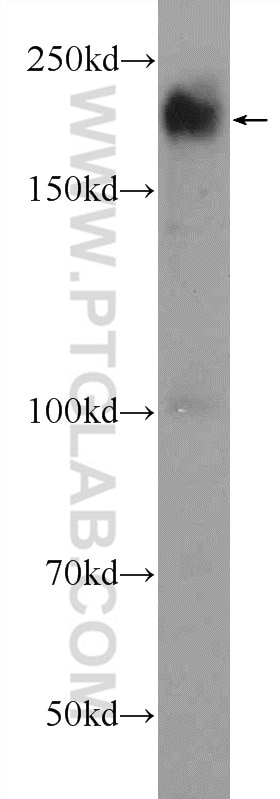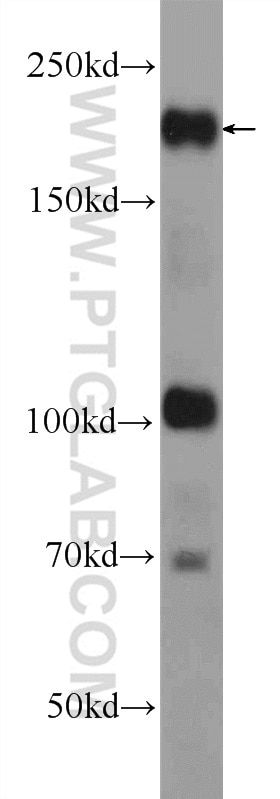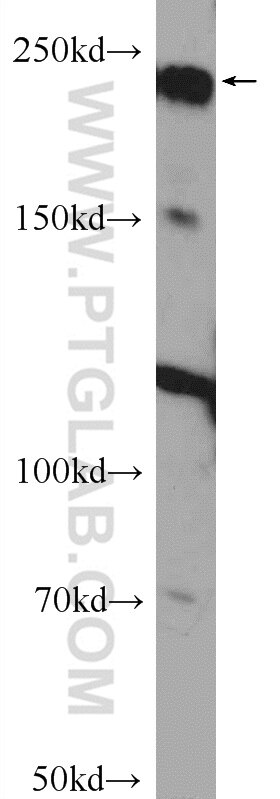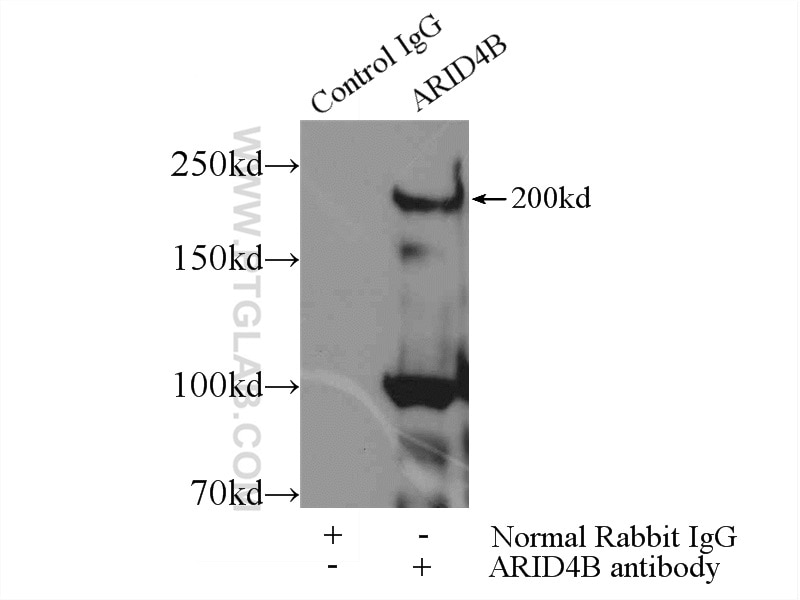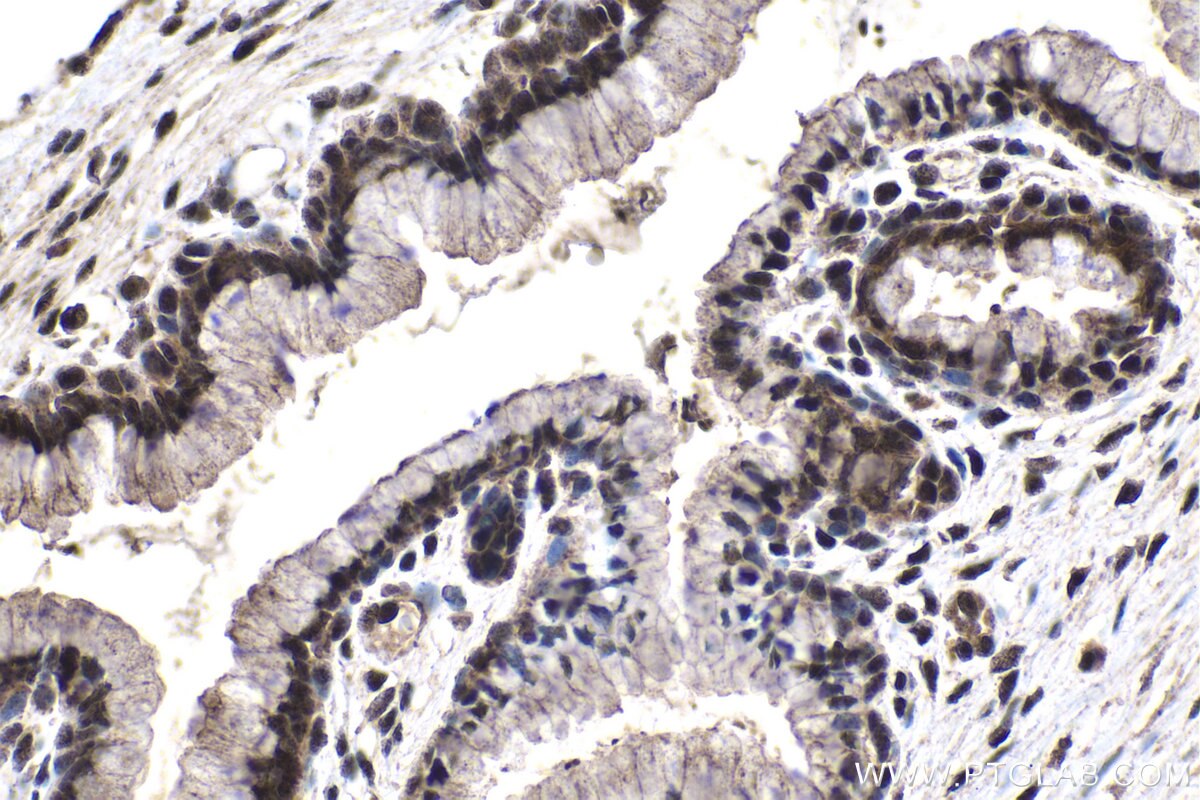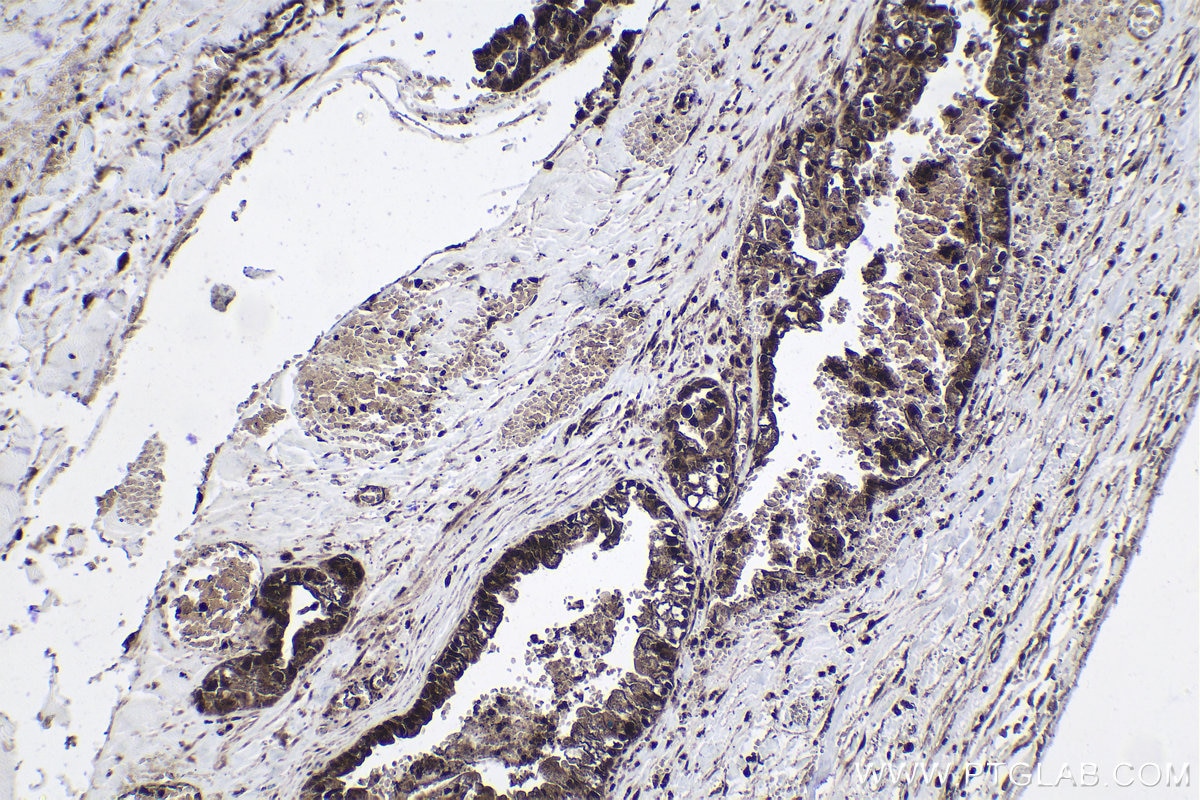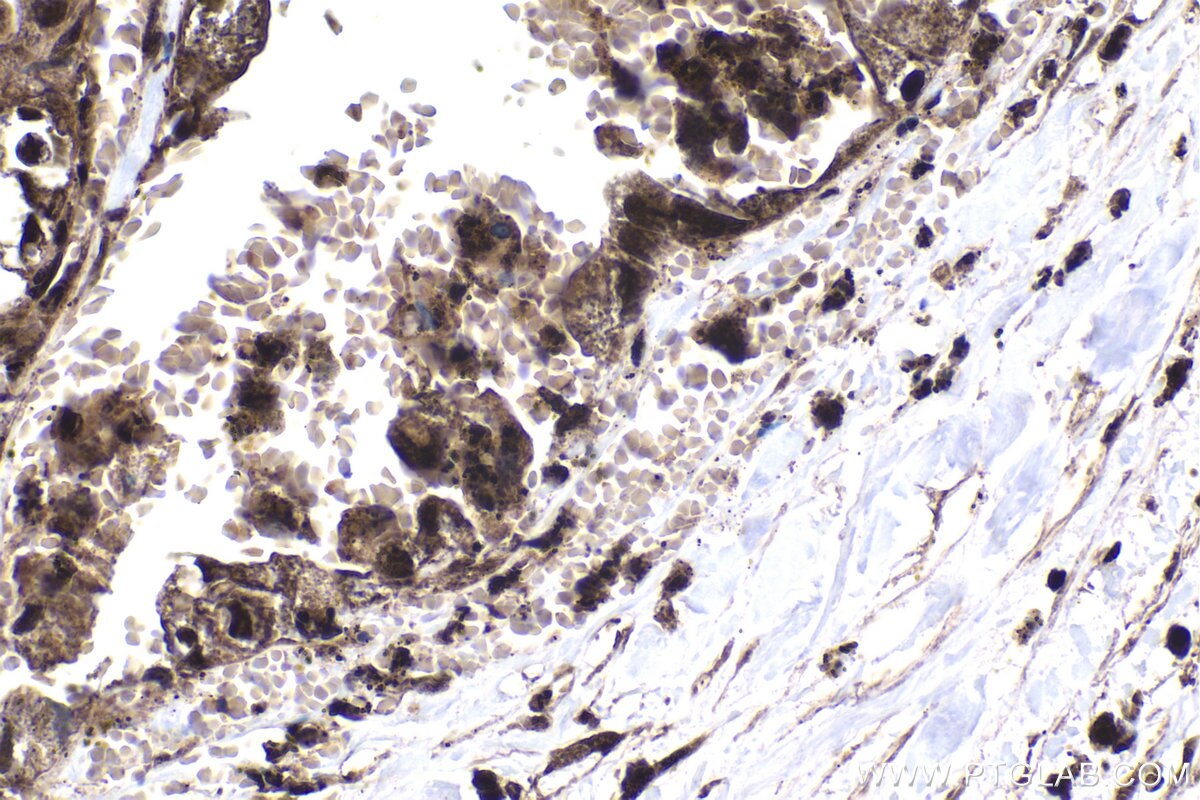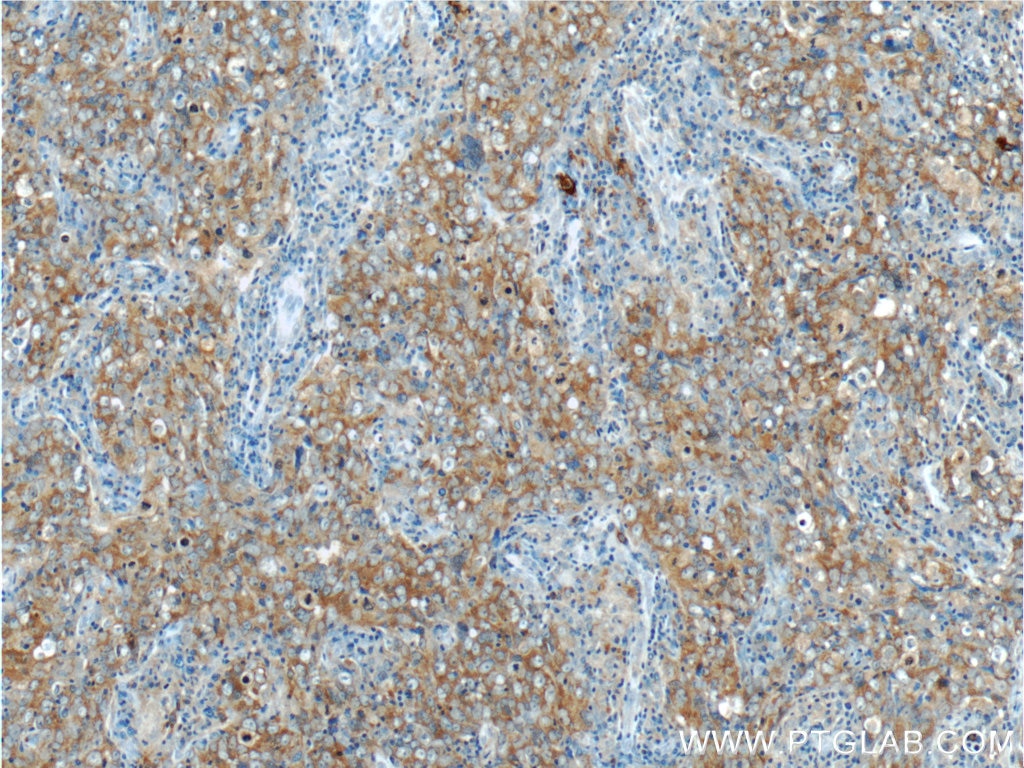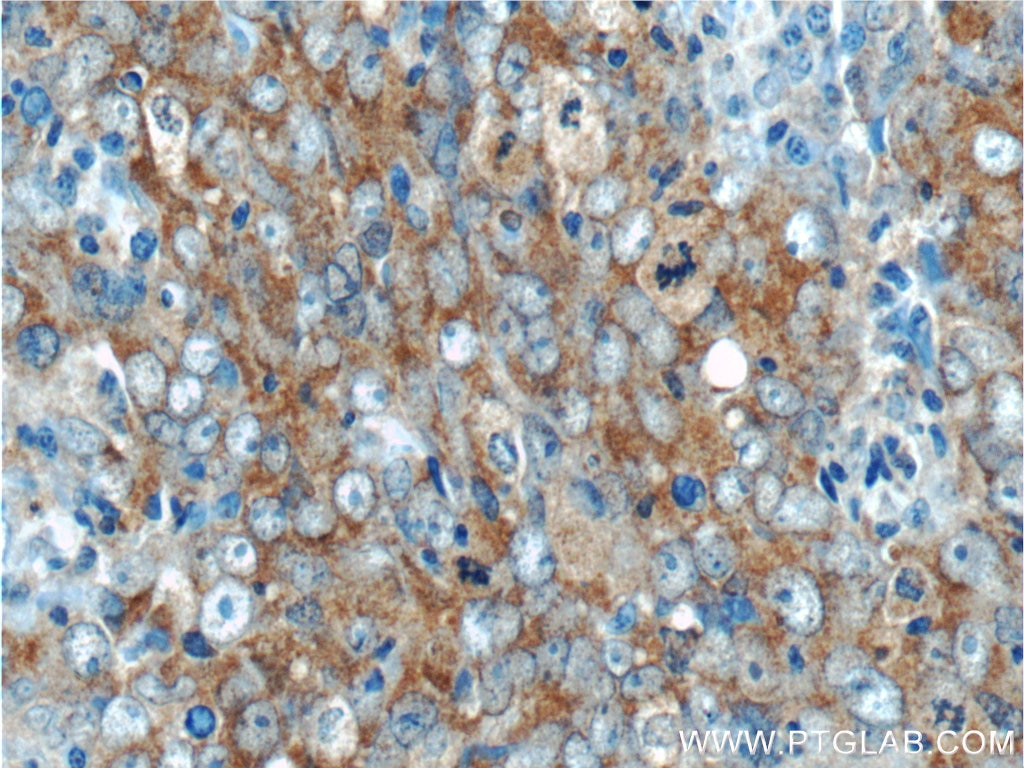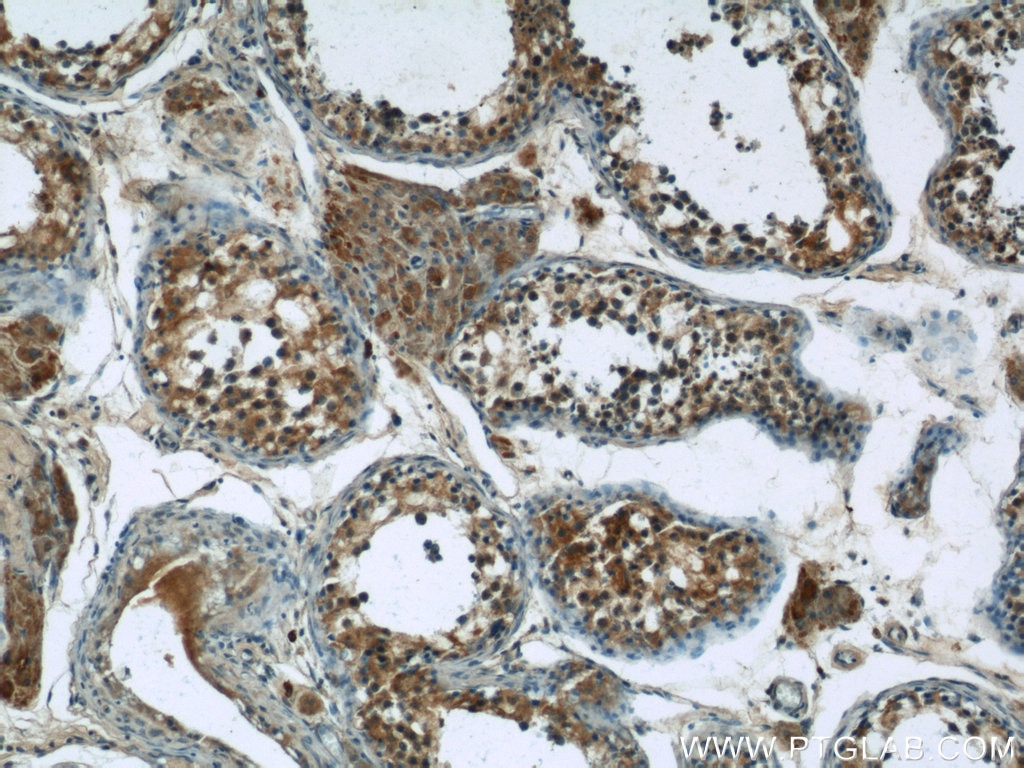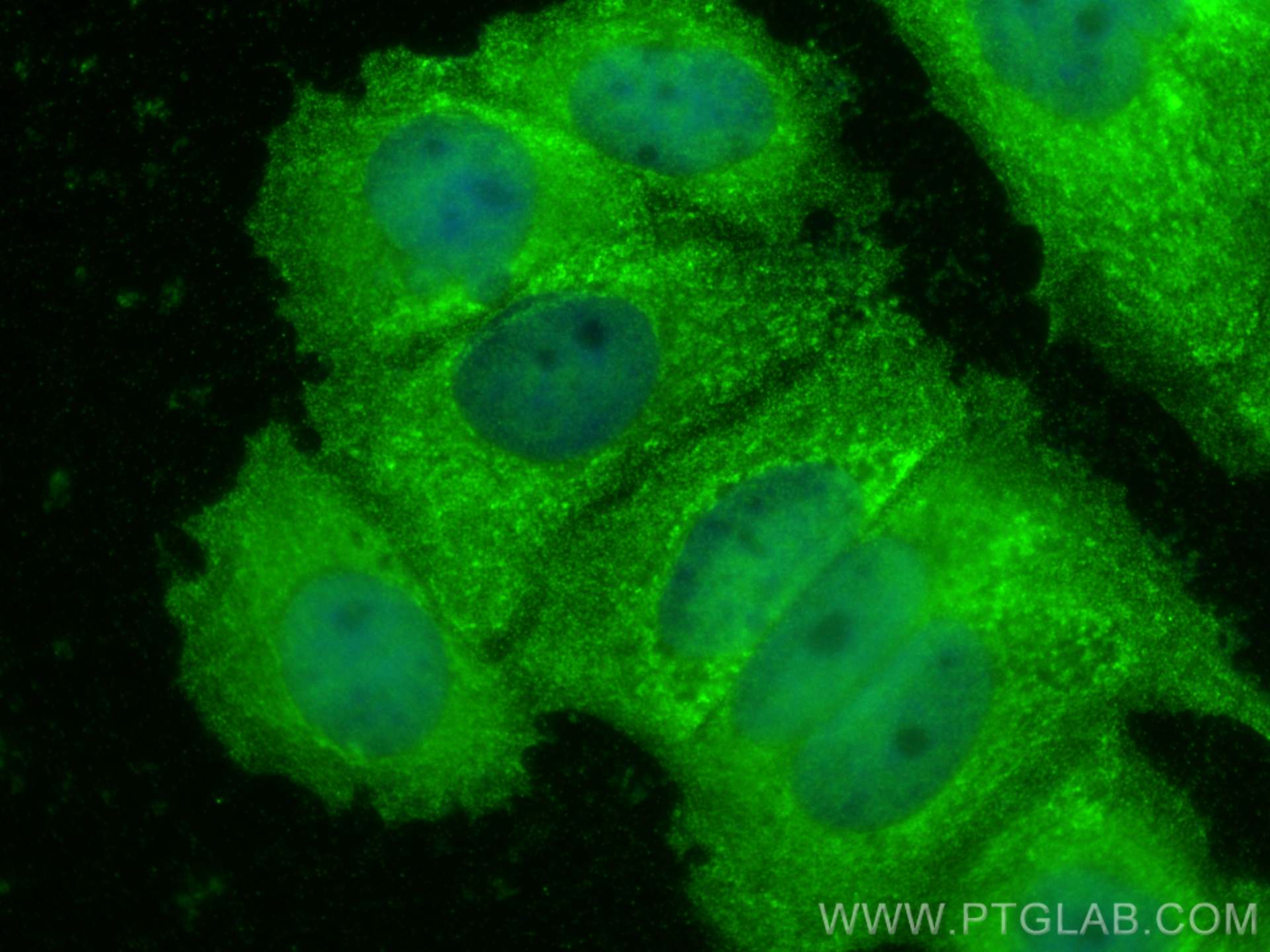- Phare
- Validé par KD/KO
Anticorps Polyclonal de lapin anti-ARID4B
ARID4B Polyclonal Antibody for WB, IHC, IF/ICC, IP, ELISA
Hôte / Isotype
Lapin / IgG
Réactivité testée
Humain et plus (1)
Applications
WB, IHC, IF/ICC, IP, ELISA
Conjugaison
Non conjugué
N° de cat : 24499-1-AP
Synonymes
Galerie de données de validation
Applications testées
| Résultats positifs en WB | cellules MCF-7, cellules A549, cellules K-562 |
| Résultats positifs en IP | cellules MCF-7 |
| Résultats positifs en IHC | tissu de cancer du pancréas humain, tissu de cancer du col de l'utérus humain, tissu de cancer du sein humain, tissu testiculaire humain il est suggéré de démasquer l'antigène avec un tampon de TE buffer pH 9.0; (*) À défaut, 'le démasquage de l'antigène peut être 'effectué avec un tampon citrate pH 6,0. |
| Résultats positifs en IF/ICC | cellules MCF-7, |
Dilution recommandée
| Application | Dilution |
|---|---|
| Western Blot (WB) | WB : 1:500-1:1000 |
| Immunoprécipitation (IP) | IP : 0.5-4.0 ug for 1.0-3.0 mg of total protein lysate |
| Immunohistochimie (IHC) | IHC : 1:500-1:2000 |
| Immunofluorescence (IF)/ICC | IF/ICC : 1:200-1:800 |
| It is recommended that this reagent should be titrated in each testing system to obtain optimal results. | |
| Sample-dependent, check data in validation data gallery | |
Applications publiées
| KD/KO | See 1 publications below |
| WB | See 5 publications below |
| IP | See 1 publications below |
Informations sur le produit
24499-1-AP cible ARID4B dans les applications de WB, IHC, IF/ICC, IP, ELISA et montre une réactivité avec des échantillons Humain
| Réactivité | Humain |
| Réactivité citée | Humain, souris |
| Hôte / Isotype | Lapin / IgG |
| Clonalité | Polyclonal |
| Type | Anticorps |
| Immunogène | ARID4B Protéine recombinante Ag21462 |
| Nom complet | AT rich interactive domain 4B (RBP1-like) |
| Masse moléculaire calculée | 1312 aa, 148 kDa |
| Poids moléculaire observé | 100 kDa, 200 kDa |
| Numéro d’acquisition GenBank | BC130418 |
| Symbole du gène | ARID4B |
| Identification du gène (NCBI) | 51742 |
| Conjugaison | Non conjugué |
| Forme | Liquide |
| Méthode de purification | Purification par affinité contre l'antigène |
| Tampon de stockage | PBS with 0.02% sodium azide and 50% glycerol |
| Conditions de stockage | Stocker à -20°C. Stable pendant un an après l'expédition. L'aliquotage n'est pas nécessaire pour le stockage à -20oC Les 20ul contiennent 0,1% de BSA. |
Informations générales
ARID4B, also named as BRCAA1 or SAP180, is a 1312 amino acid protein, which contains one ARID domain. ARID4B localizes in the nucleus and cytoplasm. ARID4B as a transcription repressor may function in the assembly and/or enzymatic activity of the Sin3A corepressor complex or in mediating interactions between the complex and other regulatory complexes. ARID4B is highly expressed in the testis and in breast, lung, colon, pancreatic and ovarian cancers. Expressed at low levels in the thymus, prostate and ovary.
Protocole
| Product Specific Protocols | |
|---|---|
| WB protocol for ARID4B antibody 24499-1-AP | Download protocol |
| IHC protocol for ARID4B antibody 24499-1-AP | Download protocol |
| IF protocol for ARID4B antibody 24499-1-AP | Download protocol |
| IP protocol for ARID4B antibody 24499-1-AP | Download protocol |
| Standard Protocols | |
|---|---|
| Click here to view our Standard Protocols |
Publications
| Species | Application | Title |
|---|---|---|
J Clin Invest The FOXN3-NEAT1-SIN3A repressor complex promotes progression of hormonally responsive breast cancer. | ||
Theranostics SLC14A1 prevents oncometabolite accumulation and recruits HDAC1 to transrepress oncometabolite genes in urothelial carcinoma. | ||
Cell Death Dis DNA-methylation-mediated silencing of miR-486-5p promotes colorectal cancer proliferation and migration through activation of PLAGL2/IGF2/β-catenin signal pathways. | ||
Br J Nutr Taurine stimulates protein synthesis and proliferation of C2C12 myoblast cells through the PI3K-ARID4B-mTOR pathway.
| ||
Cancer Lett Forkhead Box Protein FOXK1 Disrupts the Circadian Rhythm to Promote Breast Tumorigenesis in Response to Insulin Resistance |
